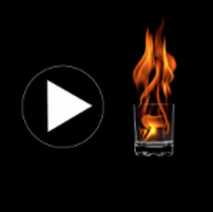 ...or to listen to it in the author's own voice, click HERE ...or to listen to it in the author's own voice, click HERE It's December 26. It's the day after Christmas. Boxing Day. And I came to wish everyone happy Boxing Day! Happy Boxing Day, everyone! Of course, there's one small problem. In the United States, from whence this screed originates? WE DON'T CELEBRATE BOXING DAY Yes, we were once part of the British Empire. That's apparently a common denominator for countries not of the UK that celebrate Boxing Day. For what it's worth, Boxing Day is generally recognized as a day when postmen, errand-boys, and servants expect a Christmas-box from their respective employers. That info is just a click away! Nonetheless, to this day, despite our heritage and the globe-spanning nature of the electronic climate in which we live, you say, "Boxing Day" to one of your fellow Americans, and you get a blank stare or a monosyllable like, "Hanh?" Then again, due to the globe-spanning nature of the electronic climate in which we live, this screed has fans all around the world. The thing is, I can't tell you where the screed's readers are other than the US and Canada. I'm not privy to that information. So, to the Canadians, we can say, "Happy Boxing Day." However, as for the podcast? THE PODCAST ALSO HAS LISTENERS ALL AROUND THE GLOBE Interestingly, according to the stats available from my syndication service, despite there being fans of the screed there, none of the podcast listeners are in Canada. But one of those listeners is in the UK. So, Happy Boxing Day, Mr. or Ms. UK Podcast Listener. The podcast has more listeners in China. But since China was not part of the British Empire (unless you count Hong Kong), China does not celebrate Boxing Day. But let's not discount Hong Kong. Hello Hong Kong! If you're listening, Happy Boxing Day! SO, THAT'S ABOUT THREE POSSIBLE PODCAST LISTENERS WHO CELEBRATE BOXING DAY Here's where it gets interesting. You know where the most listeners to the podcast version of the screed are, outside of the United States? Drum roll, please... Happy Boxing Day to all our listeners in Botswana! You heard me. Hot Shots has a fan base in Botswana. Didn't see that one coming. BOTSWANA USED TO BE A PART OF THE BRITISH EMPIRE I did not know that. My history of the British Empire is somewhat shaky. So hello, Wikipedia! Since its independence from the UK, Botswana has had one of the fastest growth rates in per capita income in the world. Formerly one of the poorest nations in the world, it is now a middle-income country. There's a high level of economic freedom. The government maintains sound fiscal policy and a tiny amount of foreign debt. Human rights are protected under the constitution. AND, SMALL BUSINESS IN BOTSWANA IS A THING Search "small business in Botswana," and Google does not disappoint. One website (which looks like 2017 and not 1997) has an article called, "5 GREAT BUSINESS IDEAS FOR YOUTH IN BOTSWANA ." They suggest Custom Made Clothing, Arts and Crafts, Magazine Publishing, Fast Food Franchise, and Baby Sitting Services. An article on the top 20 reasons to do business in Botswana include everything from political stability, safety and security and lack of corruption to low levels of taxation, great technology and infrastructure, and a literate and skilled population. LET'S START A BABY-SITTING BUSINESS IN BOTSWANA! WHO'S WITH ME?! Hmm. Kinda quiet out there. Well, anyway, Botswana sounds like a Southern Africa garden spot. So, to you in Botswana who are paying attention on this Boxing Day (which we understand you celebrate), Happy Boxing Day! AND IF YOU'RE INCLINED TO SHARE, I'D LOVE TO HEAR YOUR BOTSWANA SMALL-BUSINESS SUCCESS STORY Just send an email to submissions at slow burn marketing dot com. To everyone else here in the US where Boxing Day remains largely a mystery, if you've got a small-business success story you'd like to share for possible inclusion here in the screed, feel free to use the same address. Hope your Christmas was merry, your Hanukkah was happy, your Kwanzaa is capital, and if there's any other holiday that you celebrate, here's to that one as well. See you again in the New Year. As always, Blaine Parker Your Lean, Mean Creative Director in Park City
0 Comments
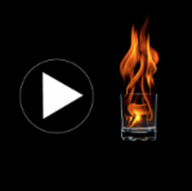 ...or to listen to it in the author's own voice, click HERE ...or to listen to it in the author's own voice, click HERE The images are etched into my memory. The images are vivid. Rafts. Life jackets. Tears. Fear. Anguish. Relief. Men. Women. Children. Old folks. The refugees clamor out of the rafts. One youngster has an inflated inner tube over his head and under his arm. You can hear waves, and you can see them rushing for the rocky beach. They scramble and splash and hug and cry. WHICH TELLS YOU ABOUT THE POWER OF THE HUMAN MIND It can fill in the blanks. It can make motion happen, and remember sounds that were barely there. 60 seconds. 70 fleeting still photographs. One voice. "I see fear, I see desperation, but I also see hope. "Thousands of people are arriving every day. "Just think about how bad it must be in their country, that they would pick their families, their children, put them on a raft that barely floats, risking their lives to find a place to live, and find a place to be accepted. "When you find it you recognize it, and that's when you really start pressing the shutter. "I feel it's important to take photographs that are gonna make a difference. "I'm Tyler Hicks, photojournalist for the New York Times." It actually gives me a chill just seeing those words on the page. WELCOME TO "THE TRUTH IS HARD TO FIND" This is one of two TV commercials from the Gray Lady's anti-fake-news campaign that ended up on ADWEEK's list of "The 10 Best Ads of 2017." If you were here last time, we looked at ADWEEK's #10 entry on that list, a sinister, brand-unfriendly creep show of a commercial for Halo Top called. "Eat The Ice Cream." It was haunting, alright. But not in any way that makes you say, "Hey, let's rush out and get some Halo Top!" Instead, it leaves you with an unsettling feeling that robots are going to sequester you away in a sterile room and force feed you some fake, vegan approximation of ice cream. Haunting...and repellent. HEY, THERE'S A COMBINATION FOR WINING FRIENDS AND INFLUENCING PEOPLE On the flip side, this commercial for the New York Times is haunting in a different and more productive way. In the week since I first viewed it, it keeps coming back to me. I keep seeing video footage that doesn't exist. I keep hearing sound effects that do exist--but for only a scant four seconds at the very beginning. The 60-second commercial is a montage of 70 still images, most in sequences of three consecutive photos. There is lots of black screen in between the image sequences. The only audio is the aforementioned four seconds of sound effects, which is waves breaking on a beach and agitated human voices. Then, during the voiceover by Tyler Hicks, there is the muted sound of a camera shutter clicking away as the images click past your vision. THIS IS SOME EXTRAORDINARY FILMMAKING IN THE SERVICE OF THE BRAND The filmmaker is Darren Aronofsky. You might know him for his theatrical efforts, like the Jennifer Lawrence psycho-thriller, Mother!, or the Academy Award-winning Natalie Portman psycho-thriller, Black Swan. I'm always reminded of his 1998 feature debut, Pi. (Yes, the mathematical constant, not the baked dish with a pastry-dough casing.) Featuring themes like chaos theory, the golden spiral, non-linear dynamics, complex game theory, Jewish mysticism, the Quran and, ultimately, insanity, Pi is an unsettling, black & white mind-bender made for a budget of $68,000, and which thrashed the competition at various film festivals, and has grossed about 5,000% of its production budget. Doesn't sound very much like this TV commercial, does it? But there is a glimmer of a parallel in Roger Ebert's comment about the movie Pi, which he awarded three and a half stars. He bashed cookie-cutter Hollywood thrillers that follow a predictable playbook, that they are not thrilling, and said of Pi, "I am thrilled when a man risks his mind in the pursuit of a dangerous obsession." THIS COMMERCIAL IS ABOUT PURSUIT OF AN OBSESSION Mr. Aronofsky said in a statement also published in ADWEEK, "Photojournalists risk their safety, their minds and often their lives in order to capture what is really happening in the most tumultuous parts of the world. They rush face first into war, disease and human plight to capture the horrors that are unfolding on and to our planet. Many of their images end up changing us and how we treat each other." An obsessive dedication to finding and presenting the truth in a hostile climate is a worthy goal for a newspaper brand. And for a heritage brand long considered the nation's newspaper of record, this Aranofsky-helmed message about the pursuit of truth certainly raises the bar on the tagline, "All the News That's Fit to Print." IT ALSO DEMONSTRATES THE POWER OF YOUR MIND TO CHANGE THINGS I defy anyone watching this commercial to not remember motion and sound that doesn't actually happen. The four seconds of sound effects in the opening of the message, accompanied by a black screen, is a powerful cue. In some ways, it demonstrates the power of radio. There is no literal picture. But right away, you know something important is happening on a beach. Then, you see still images of something important happening on a beach. You also see lots of black space, where your mind gets to further fill in blanks with images that aren't there. There's the sound of the camera shutter. There's the voice of the photojournalist. AND THERE IS PLENTY OF OPPORTUNITY TO INSERT YOURSELF INTO THE VIDEO SPACE And why not? After all, this message is not about the New York Times. It's not about how hard it is to be a photojournalist in the wild. This is a message about you. It's about you, the customer, and your relationship to the truth. It's about the one way you should feel about the brand. THIS MESSAGE IS ALSO ABOUT SOMETHING ELSE It's a little bit about the seasonal brand being peddled right now. No, it's not about Christmas. Not on the face of it. Heck, it first aired in April. But Mr. Hicks, the photojournalist, says, "I see fear, I see desperation, but I also see hope." In an age when the Christmas brand has become about consumerism run amok, it's nice to find some small reminder of what the Christmas brand really is about. And the Christmas brand, with its story of wise men seeking a baby in a manger, is ultimately about one thing: It's about hope. Finding this commercial on the ADWEEK website was like a little Christmas present come early. CALL ME A COCKEYED OPTIMIST The Fabulous Honey Parker does. This commercial is good enough that it gives me hope for advertising. It gives me hope for my country and its people. It gives me hope that we will all come to our senses. And it gives me hope that you might get to share a little hope this holiday season. Whatever holiday you celebrate in the season of hope, here's wishing you a merry, merry, happy, happy. To see "The Truth Is Hard To Find - Tyler Hicks" visit https://youtu.be/zs4-rb0f7HI As always, Blaine Parker Your Lean, Mean Creative Director in Park City 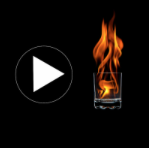 ...or to listen to it in the author's own voice, click HERE ...or to listen to it in the author's own voice, click HERE AdWeek has released its list of "The 10 Best Ads of 2017." I thought, this should be good. These kinds of lists always give the small-business owner a great lesson in what to do--or not to do, depending on the particular advertisement. And the first ad shown, the tenth of the 10 ads represented, is one heck of a "how-to" lesson in advertising. The very first thing that anyone who's ever seen 2001: A Space Odyssey thinks is, Hey, that's the neoclassical bedroom from the end of the movie. And it is. It's an actual recreation of that set with the furniture removed. But the room is still unmistakable in its antiseptic starkness and its under-lit white-tile floor. BUT DR. DAVID BOWMAN IS NOT THERE Instead, an elderly woman with short, white hair sits slumped in a chair in the middle of the room, wearing a white hospital gown. There is an odd, orbiting device above her head. Who is she? Why is she there? What is the odd device above her head? Why does it look like a series of concentric lampshades, and what do the lampshades do as they slowly spin on their axis? A creepy song plays, discordant and metallic sounding, a cheery voice singing disturbing words about ice cream. A robot rolls into the frame. Its mechanical, emotionless voice says, "Good morning. It's time for ice cream." Its arm thrusts forward a spoonful of white ice cream. She tastes it and says, "Oh, it's good! What's--" "Eat the ice cream," says the robot. IT FEEDS HER ANOTHER BITE She takes it, then says, "Where am I?" "Humans require ice cream." "What is this place?" "Eat the ice cream." "I don't want any more!" "Eat the ice cream." "How long have I been here?" "You're so hungry for delicious ice cream." THE ROBOT CONTINUES THRUSTING THE ICE CREAM SPOON AT HER "Get that away from me!" She knocks the spoon to the ground. There's a shot of the spoon clattering on the floor. One vaguely recalls a similar image in Kubrick's movie. Homage! She says, "Where...where's Steven?" A door in the front of the robot's body opens, almost with apprehension. Hesitation. Then, an arm slowly protrudes from the dark space within, holding out... An ice cream cone. It slides towards the woman. She regards it with trepidation and recoils ever so slightly. THE ROBOT SWIVELS ITS HEAD TO ONE SIDE "Everyone you love is gone. There is only ice cream." The camera pulls back. The woman begins to sob. She slumps her head. There is a dark and dissonant swoosh and "whump." Following is a product shot. The product is Halo Top ice cream. PUTS YOU RIGHT IN THE MOOD, DOESN'T IT? This is perhaps the best produced, hilariously dystopian, grimly satisfying, un-motivating advertisement for a food product ever. And here's the one thing I really do appreciate about the reportage around this commercial. I've read several stories that say basically same thing. "Wow that's funny. "And it does the product no favors." Yes, earlier I did say that this ad would offer one heck of a "how-to" lesson in advertising. The lesson is how to not do it. NEVER COMMIT SACRIFICE Never sacrifice your message or your product--or your brand--to the self-pleasuring comedy of a message driven by creative ego. I've seen it constantly in small-business radio advertising. But not like this epic horror. Understand, this commercial was greenlit by the CEO of Halo Top. It was also produced to play in movie theaters before Stephen King's It. For that latter tactic, you can almost excuse it. Except that, it lives on in YouTube land. And plenty of people are seeing it. And viewer reactions are things like, "That's hilarious. I'll never eat ice cream again." The Fabulous Honey Parker, who came away from her career in big agency advertising with good rules, and good ways to break rules, has a simple rule about food advertising. "YOU HAVE TO WANT TO EAT IT" I showed her this video. She did something I've never seen. She watched with her mouth agape. Her reaction was something like, "Oh, my God." There is nothing tasty about the old woman in sinister limbo being tortured by a robot with a spoonful of ice cream. Where it should be the hero, the product becomes evil. Granted, "Got Milk" commercials cast the product as the hero absent. But nobody needs to be sold on milk being tasty. They merely need to be reminded to buy milk. In those stories, the protagonists who were too careless to not buy milk end up paying the price. The lesson is, "Don't let this happen to you." And it was hugely successful. Except with the Spanish-speaking community. Hispanic mothers found nothing quite as insulting as the idea that they would forget to buy milk for their families. THERE WAS AN EMOTIONAL DISCONNECT "Got Milk" was a huge failure with that demographic. Which is why Goodby-Silverstein launched a campaign called, "Familia, Amor Y Leche." Family, Love & Milk. For that market, it reversed the emotional disconnect inherent in the sardonic message, "Got Milk?" But the emotional disconnect of "Eat The Ice Cream" is stunning. The product is malevolent. It is an antagonist. It is threatening and dangerous. Abandon all hope, ye who eat the ice cream! Since the video does not appear on the Halo Top YouTube channel, it's safe to assume they really don't want it out there and that it was a publicity stunt designed to create buzz. But the take away for the small-business advertiser: play to your core customer's needs, wants, desires, or even fears. But do not make your product fearsome and loathsome and sinister. It doesn't pay off. To see "Eat The Ice Cream" and revel in its dysfunctionality, visit https://youtu.be/j4IFNKYmLa8 As always, Blaine Parker Your Lean, Mean Creative Director in Park City 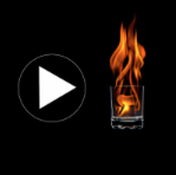 ...or to listen to it in the author's own voice click here ...or to listen to it in the author's own voice click here Because beer always makes you smarter. The Bud Light Real Men Of Genius radio campaign went away in 2008 after 7 inspired years. It was epic, it made the brand a market leader, and was parodied endlessly (and badly) in small-business, local-radio advertising. Since then, But Light has not had such a juggernaut--but today, they may be on the brink. This morning, I was confronted with a video of a town crier standing inside a craft brewery in Minneapolis. He was reading a "Hear ye! Hear ye!" to everyone in the place. It was a cease & desist letter from Bud Light to the craft brewer. So, I thought, "Hold my beer. Watch this. I'm going to find out more." The story is interesting, and it's a useful brand advertising lesson--even for the small-business owner. "DILLY DILLY!" Have you heard that? Have you said it? I hadn't until this morning. I haven't been watching a lot of commercial TV lately. But it seems that Bud Light and their agency, Wieden + Kennedy, is drafting off of the zeitgeist. In this particular case, it's the mania around Game of Thrones. They've done it with a commercial that shows a royal banquet room, and a line of subjects paying obeisance to the king. As people step up and offer sixes and cases of Bud Light to the king, the king raises his own Bud Light and proclaims each person, "A true friend of the crown! Dilly, dilly!" And everyone in the banquet room responds by raising their own Bud Lights and crying, "Dilly, dilly!" This happens a couple of times, and then another gentleman steps up and offers a large brown bottle, without a label, and sealed with red wax. He puts it in front of the king, who says, "What, um, what is that?" "This is a spiced honey mead wine that I have really been into lately." WHAT FOLLOWS IS A LONG, UNCOMFORTABLE SILENCE Then, the king says to the gent, "Please follow Sir Brad. He's going to give you a private tour of the Pit of Misery." The hapless fellow is hauled off while everyone happily toasts, "To the misery! Dilly, dilly!" The announcer chimes in over a shot of the Bud Light logo rendered in rice, barley, hops, and the head of a beer: "Here's to the friends you can always count on. Bud Light, brewed to be America's favorite light lager." Oh, boy. Ya know what's going on here? This is an attack ad. Very funny. Really well produced. But it's an attack ad. IT'S TAPPING INTO THE GAME OF THRONES ZEITGEIST AND ATTACKING CRAFT BREWING If you don't know, craft brewing has become HUGE. It's huge enough that there are now three fundamental problems. One, craft brewers are having a hard time competing with one another because there's so much competition and a limited market. Two, consumers are suffering from FOMO, Fear Of Missing Out. When they look at a wall of craft beers in the liquor store, they become anxious and don't know what to buy, fearing they may be missing something better than what they'll choose. And three, craft brewers are eating into big brewers' market share. And I've got to be honest, as a guy who's been a fan of craft beers since they began bubbling up in the 1990s, even I'm over it. There are plenty of great beers out there. But the preciousness and the overtness and the slam-you-in-the-face-ness of so many of these beers is out of hand. AND YES, I'M THE GUY WHO LAST WEEK THREW LAURELS TO A NANO-BREWER Mad Fritz, the Napa Valley nano-brewery, is a brilliant brand. It's not precious. It's intelligent and arcane and balanced and specialized and scarce. But so many craft brewers are so clever and working so hard for people who are so pretentious about their beer. I get it. This is the pendulum swinging the other way after decades of mega-brewery domination. So...where's the attack? One, the subject presents a precious bottle of spiced mead (which, if you don't know, is a honey wine). Two, he presents the bottle with the cliché qualifier, "That I've really been into lately." And three, the announcer says, "Here's to the friends you can always count on. Bud Light, brewed to be America's favorite light lager." A POX ON CRAFT BREW HEADS! Long live the light lager! Can you imagine any big brewer even five years ago using a line like, "America's favorite light lager." They'd say, "Beer." They'd use modifiers like, "light," or "crisp," or "refreshing." They might say something unqualified like, "Beechwood aged!" (I once read an article by a reporter who called Budweiser to find out what "Beachwood aged" actually meant. The reply from the person at the other end was essentially, "Well, you know, beechwood. It's beechwood aged!") Beer has been a commodity product. AND NOW, COMMODITY THINKING IS BEING UNDERMINED BY ARTISAN THINKING Regardless of how you feel about craft beer (I feel it's a good thing), it's not hard to see how this happened. A landscape of fizzy yellow beers was infected by variety and flavor and choice and surprise. Yes, craft beers are surprising. Not always in a good way. A top-fermented, dry-hopped ale that tastes of rosebuds, garlic and old gym socks may not be a good surprise. Nonetheless, it has become a pervasive threat to the market dominance of brands like Bud Light, a brand whose core, die-hard fan is intolerant of things like craft beer. I know people like this. They are single-beer fanatics and they are angry at craft brewing. Bud Light is shooting fish in a barrel--and being really funny. BUT WHAT ABOUT THE TOWN CRIER? Back to the brewery in Minneapolis. The brewery is called Modist. Not sure how you pronounce it. Modist very recently released a brew called, "Dilly Dilly Mosaic Double IPA." Mosiac is a strain of hops. It is known for its complex and broad aromas backed by a clean bittering. If you care. Modist put this brew in their taproom only. They did not release it widely. They created a logo that said, "Dilly Dilly" in a blatant rip-off of the Bud Light swirl logo. ON NOVEMBER 28, THEY ANNOUNCED IT ON THEIR FACEBOOK PAGE They posted that they were releasing it on December 1. The same day they released it, they posted a video of the town crier standing in their lobby, reading the cease & desist "proclamation" aloud. The town crier's message included a request to make sure this ale was a one-time-only occurrence, and offers the brewery two free tickets to the 2018 Super Bowl in Minneapolis. They next day, Modist posted a picture of the town crier's scroll and the "Dilly Dilly" ripoff logo, with the message, "Come drink this beer before we rename it 'Coat Tails.'" I smell a publicity stunt cooked up by Anheuser Busch, whose parent company is not known for being so kind with its C&Ds. Nonetheless, it's fun, it's well-crafted, it bears retelling, it's good advertising, and a good stunt for the press. WHAT'S THE TAKEAWAY FOR YOU? One, no business of any size is too small for a publicity stunt. I've done it with a tiny business, getting them coverage in a major metropolitan daily. You need to be creative, relevant, and interesting. Two, your business can be a threat to the bigger market leaders. You just need to understand how to be different and resonant and offer your core customer a better reality. And three, never discount the value of making the prospect feel the right thing. "Here's to friends you can count on." That is a simple, unsophisticated, artless sentiment--and it's going to sell a lot more beer than it deserves. It's also part of the Famous Among Friends conceit that Bud Light has been using for over 30 years. BUD LIGHT APPEARED AT MODIST WITH GREAT ALACRITY The town crier was on the scene so quickly, and Modist was so on top of the situation, that it smacks of benign collusion. And the fact that Bud Light is acknowledging Modist in this way (and likely partnering with them) demonstrates that they probably aren't as down on craft beer as their advertising might imply. Instead, they could be preparing to invest in Modist, if not preparing to buy them outright. Seem unlikely? Tell that to craft brewers Goose Island, Blue Point, Breckenridge, Golden Road, Four Peaks, 10 Barrel, Devils Backbone and Karbach--all of whom have been acquired by Anheuser Busch. Your brand is also never too small to be acquired by a giant. For a peek at "Dilly Dilly," Click here: https://youtu.be/D8Cb5Wk2t-8 As always, Blaine Parker Your Lean, Mean Creative Director in Park City |
AuthorBlaine Parker is prone to ranting about any and all things related to brand. In many ways, he is a professional curmudgeon. While there is no known vaccine for this, the condition is also not contagious. Unless you choose it to be so. Archives
February 2022
Categories
All
|
|
© Copyright 2020 Slow Burn Marketing LLC |
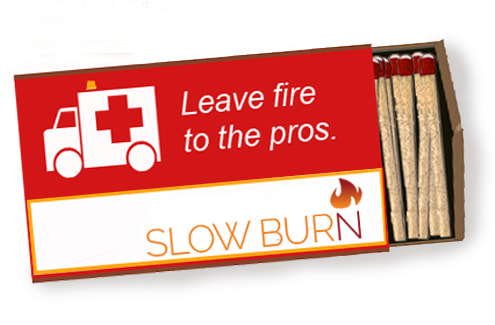
 RSS Feed
RSS Feed

